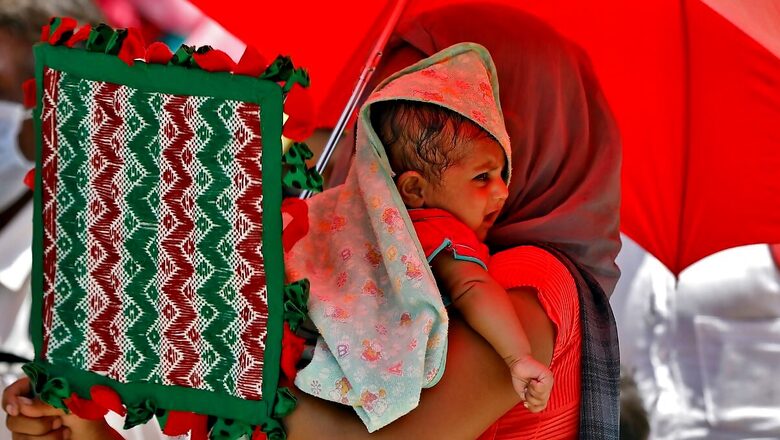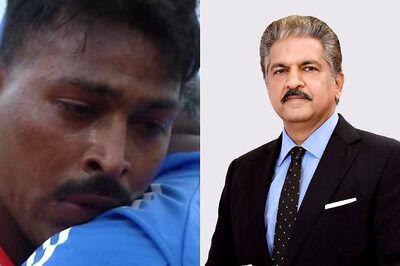What is a Heatwave? Understanding the History, Consequences and Future Impact in Classes With News18

views
India is one of the countries most exposed and vulnerable to heat. Hot days and hot night events have risen significantly, and are projected to increase by 2050. Heatwaves are also predicted to arrive earlier, stay longer and become more frequent. South Asia has become a prominent global climate change hotspot. This year, it’s eastern and northeastern India and Bangladesh which are bearing the brunt of heat waves.
Heatwaves are becoming more frequent and severe due to climate change, with over 90 per cent of India in the “extremely cautious” or “danger zone” of their impacts, according to a new study. Let us understand more about Headwave and its impact in Classes With News18.
What is a Heatwave?
A heatwave is defined as a period of unusually hot weather with above-normal temperatures that typically last three or more days. As per the Ministry of Statistics and Programme Implementation definition, a heatwave is a prolonged period of excessive heat, often combined with excessive humidity.
Usually, India experiences a stretch of this during spring and the onset of summer, around the March-June period, and on average, two or three heatwave events occur every season.
Heatwaves are predominantly observed over two areas — central and northwest India and coastal Andhra Pradesh and Odisha. Climate change and global warming, current research suggests, have increased the probability of heatwaves in the past three decades.
When is a Heatwave Declared?
A heatwave is declared by IMD when the maximum temperature is above 40 degrees Celsius and 4.5 degrees above normal. A severe heat wave is declared when the temperature is above 40 degrees Celsius and 6.5 degrees above normal. Heatwaves usually occur in the period from March to June in central and north-western India (heatwave zone) and in the coastal areas of Andhra Pradesh and Odisha. In this region, the frequency of heat waves is slightly lower than in northern India.
Recent Impact of Heatwave in India
On April 16, 13 people attending a public function died of heat stroke in Navi Mumbai, Maharashtra. While February and March saw record-setting temperatures, deaths have been reported even when the temperatures were not sky-rocketing and people were exposed to extreme humidity.
Multiple Indian states in April, including West Bengal, Maharashtra, Odisha, Tripura, and Meghalaya, shut schools for days to save children from the heat wave, while states like Uttar Pradesh and Jharkhand rescheduled school timings. On June 8, the day the Indian Meteorological Department announced the setting in of the southwest monsoon over the southern state of Kerala, states from Goa in western India to Uttar Pradesh in the north and Jharkhand in the east extended summer holidays in schools.
Such trends of extended summer vacation or overall more holidays during the summer months in schools in India are likely to become the new norm, adding the education sector to the list of areas likely to suffer from direct impacts of climatic changes.
In addition to the frustration and discomfort of working in high temperatures, heatwaves can lead to health issues and even deaths. The IMD said temperatures will fall as rain showers are expected in areas subsumed by the heatwave and will provide much-needed relief. However, it warned more scorching weather lies ahead in the coming weeks.
History of Heatwave in India
Whether the official summer months of March, April, May, and June in 2023 record overall higher-than-normal temperature remains to be seen. The rise of mercury in India during different months has been leading to the shattering of many records over the past few years – all five warmest years in India on record since 1901 were in the past fifteen years – 2016, 2009, 2017, 2010, and 2022. In fact, the IMD said that 11 out of the 15 warmest years were recorded between 2008 and 2022.
Since 2010, an estimated 6,500 people have died from heat-related illnesses. According to IMD, 2023 saw the warmest February since 1901, with a maximum temperature of 29.5C (85.1F).
The paper published in 2021 said there were 706 heatwave incidents in the country from 1971-2019. Heatwaves claimed more than 17,000 lives in 50 years in India, according to a paper authored by M Rajeevan along with scientists Kamaljit Ray, S S Ray, R K Giri and A P Dimri.
Future Impact
Most parts of India, including those in peninsular India and the coasts will see an increase in the duration of heatwaves by 12-18 days by 2060, a new report from the India Meteorological Department (IMD) released said, recommending a comprehensive response plan for heatwaves which includes cultural, institutional, technological and ecosystem-based adaptation strategies.
Global models referred to by the report suggest an increase of about two heatwaves and an increase in duration of heat waves by 12-18 days over the period 2020-2064, due to global warming.
















Comments
0 comment